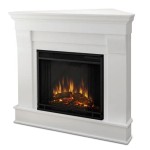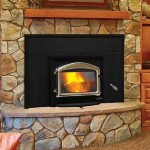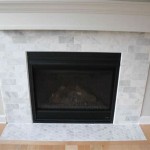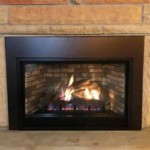The Enduring Appeal of Custom Wood Fireplace Mantels
Fireplaces have long served as focal points in homes, providing warmth, comfort, and a gathering place for families and friends. The mantel, positioned above the firebox, adds architectural interest and provides a surface for displaying cherished objects, artwork, and seasonal decorations. While various materials can be used for fireplace mantels, wood remains a popular choice for its natural beauty, versatility, and ability to complement a wide range of interior design styles. Custom wood fireplace mantels offer homeowners an opportunity to create a truly unique and personalized element that enhances the overall aesthetic of their living space.
The selection of a custom wood fireplace mantel involves careful consideration of several factors, including the type of wood, the design and style, the dimensions and proportions, and the installation process. Understanding these key aspects will empower homeowners to make informed decisions and collaborate effectively with designers and craftsmen to achieve their desired outcome.
Selecting the Right Wood Species for Your Mantel
The choice of wood species is a critical determinant of the mantel's appearance, durability, and cost. Different wood species possess distinct grain patterns, colors, and textures, each lending a unique character to the finished product. Some of the more common and desirable wood species for custom fireplace mantels include:
- Oak: Known for its strength, durability, and prominent grain pattern, oak is a classic choice for both traditional and contemporary settings. White oak is particularly valued for its resistance to moisture and rot.
- Maple: With its smooth, fine grain and light color, maple offers a clean and modern aesthetic. It is also a durable hardwood that accepts stains and finishes well.
- Cherry: Renowned for its rich, reddish-brown color and elegant grain pattern, cherry adds a touch of sophistication and warmth to any room. Cherry wood darkens and becomes richer over time, developing a beautiful patina.
- Walnut: A premium hardwood with a dark, chocolate-brown color and striking grain patterns, walnut exudes luxury and refinement. It is often used in high-end custom mantels.
- Pine: A softwood with a light color and distinctive knots, pine offers a more rustic and informal look. It is also a more affordable option compared to hardwoods.
- Reclaimed Wood: Using reclaimed wood adds a unique character and story to the mantel. Reclaimed wood can come from various sources, such as old barns, factories, and warehouses, and often features weathered surfaces, nail holes, and other imperfections that add to its charm.
In addition to aesthetics, the wood species' physical properties should also be considered. For example, if the fireplace is used frequently and generates significant heat, a harder wood like oak or maple may be more suitable than a softer wood like pine. Furthermore, the wood's moisture content should be properly controlled to prevent warping or cracking after installation. Kiln-dried wood is generally preferred for fireplace mantels as it has been dried to a stable moisture level.
Design and Style Considerations for a Custom Mantel
The design and style of the custom wood fireplace mantel should complement the overall architectural style of the home and the homeowner's personal tastes. There are a wide range of design options available, ranging from simple and minimalist to ornate and elaborate. Some popular mantel styles include:
- Traditional: Traditional mantels often feature intricate carvings, moldings, and details, such as dentil work, fluting, and corbels. They are typically made from hardwoods like oak, cherry, or walnut and finished with rich stains or paints.
- Contemporary: Contemporary mantels tend to be sleek, minimalist, and uncluttered. They often feature clean lines, geometric shapes, and simple profiles. Light-colored woods like maple or painted finishes are common choices for contemporary mantels.
- Rustic: Rustic mantels embrace the natural beauty of wood, often featuring exposed grain, knots, and imperfections. Reclaimed wood is a popular choice for rustic mantels, and they may be finished with a natural oil or wax to enhance the wood's character.
- Farmhouse: Farmhouse mantels combine elements of traditional and rustic styles. They often feature simple, clean lines with distressed finishes or shiplap details. Painted or stained wood is commonly used in farmhouse mantels.
- Floating: Floating mantels are a modern and minimalist option that appears to float on the wall without any visible supports. They are typically made from a single piece of wood and can be mounted to the wall using hidden brackets.
The dimensions and proportions of the mantel should be carefully considered to ensure that it is visually balanced and harmonious with the fireplace and the surrounding space. The mantel should be wide enough to provide a substantial presence without overwhelming the fireplace, and the depth of the mantel should be sufficient to accommodate the homeowner's desired display items. The height of the mantel is also important, as it should be high enough to protect the wall from the heat of the fire but not so high that it obscures the view of the flames. Local building codes and manufacturer's recommendations should be consulted to ensure that the mantel meets all safety requirements.
During the design process, homeowners should consider the desired level of detail and ornamentation. Intricate carvings, moldings, and inlays can add a touch of elegance and sophistication, while simpler designs may be more appropriate for contemporary or minimalist settings. The finish of the mantel is also an important consideration. Stains can enhance the natural beauty of the wood and bring out the grain pattern, while paints can provide a more uniform and contemporary look. The finish should be durable and resistant to heat and moisture. Professional woodworkers can provide expert advice on selecting the appropriate finish for the chosen wood species and design.
Installation and Maintenance of Your Custom Wood Mantel
The installation of a custom wood fireplace mantel is a critical step that should be performed by a qualified professional to ensure that it is properly secured and meets all safety standards. The installation process typically involves attaching the mantel to the wall using screws, bolts, or other fasteners. The type of fasteners used will depend on the weight of the mantel, the type of wall construction, and the specific installation requirements. It is important to ensure that the mantel is level and plumb and that all fasteners are properly tightened.
Before installation, it is essential to verify that the fireplace meets all applicable building codes and safety regulations. This includes ensuring that the fireplace has adequate clearances from combustible materials and that the chimney is properly vented. A qualified inspector can help to ensure that the fireplace is safe and code-compliant. In some cases, a permit may be required for the installation of a fireplace mantel.
Once the mantel is installed, it is important to follow proper maintenance procedures to preserve its beauty and longevity. Regular dusting and cleaning will help to remove dirt and debris that can accumulate on the surface of the wood. Avoid using harsh chemicals or abrasive cleaners that can damage the finish. A mild soap and water solution is typically sufficient for cleaning wood mantels. If the mantel is exposed to direct sunlight, it may be necessary to apply a UV-resistant finish to prevent fading or discoloration. Periodic refinishing may also be required to restore the mantel's original luster and protect it from wear and tear.
The type of wood used and the location of the fireplace can influence the likelihood of damage from heat. Fireplaces that are used frequently may require additional heat shielding. Properly cured wood is less likely to crack or warp from the heat of the fireplace. Reclaimed wood, in particular, may be more susceptible to cracking if not properly treated before use.
Custom wood fireplace mantels offer a unique and personalized way to enhance the beauty and character of a home. By carefully considering the wood species, design style, dimensions, and installation process, homeowners can create a stunning focal point that will be enjoyed for many years to come. Working with experienced designers and craftsmen can help to ensure that the mantel is both aesthetically pleasing and structurally sound. Properly installed and maintained, a custom wood fireplace mantel will add warmth, comfort, and elegance to any living space.

Custom Fireplace Mantel With Corbels Floating Rustic Tv Shelf Made Solid Wood

Mount Vernon Mantels Custom Wood Fireplace Manufactured To Your Specifications

Custom Fireplace Mantels Hand Carved Wood Long Island Nyc

Custom Made Fireplace Mantel Hand Hewn Rustic Barn Beam Farmhouse Country

Fireplace Mantel Rustic Wood Custom Modern Contemporary

Handmade Rustic Fireplace Mantel Shelf Cut Oak Tree Like Face By Antique Woodworks Custommade Com

Wood Fireplace Mantels Reclaimed Barn

Rustic Wood Fireplace Mantels Log Mantles Best Of Nature

Custom Fireplace Mantels Bluffton A Wood Mantel You Ll Love Studabaker Specialty Woodworks

Rustic Wood Fireplace Mantel Shelf Distressed Farmhouse Handmade Floating Beam Custom Grain Free
Related Posts








